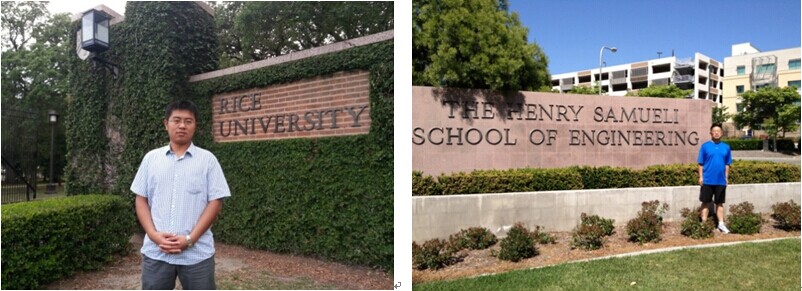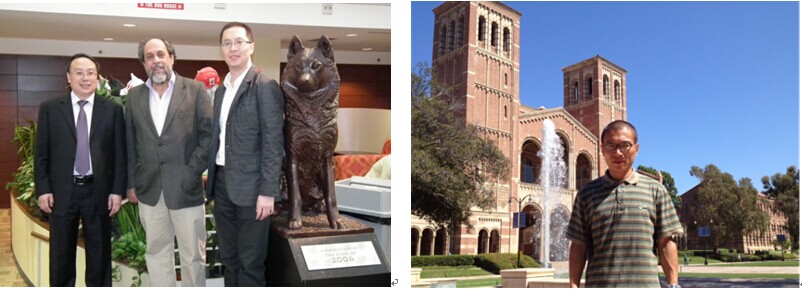Department of Bridge and Tunnel Engineering has set the undergraduate major, Road, Bridge and River-Crossing Engineering, and has nurtured senior talents of engineering techniques for the highway traffic system, city construction system and railway construction system.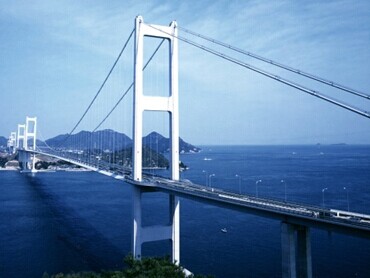
At present, there are 17 professors in this department, among which there are 3 titled as professor and doctoral supervisor, 1 as overseas part-time doctoral supervisor, 9 as associate professor and 7 as assistant professors. Plus, among the teachers, 11 of them own the doctorate (including 5 post-doctors) and 2 of them are PhD candidates. Above 50% of the whole teaching staff have the experience of visiting high-level universities abroad for over 1 year. The subject of bridge and tunnel engineering has opened a post-doctoral research station for its subject direction, and has owned the degree-awarding right for Doctor of Engineering, Master of Science in Engineering, Master of Engineering and Bachelor of Engineering, also has been a national first-class civil engineering key subject.
The main research topics of this department focus on structural durability of bridges, wind-resisting and seismic design of bridges, application of new materials to bridges, theory research of composite structure of bridge, assessment and reinforcing technology of existing bridges, design theory and construction technique of externally pre-stressed concrete bridge, structural health monitoring of long-span bridge.
The subject of bridge and tunnel engineering has been actively participating in the national and local economic construction, widely connecting the highway traffic and municipal construction system of provincial government of the whole nation especially the northeastern region, solving plentiful problems for the infrastructure construction of highway traffic. In the meantime of participating in engineering projects, this subject emphasizes the research of basic theories, and has been committed for 7 projects of NSFC (Natural Science Foundation of China) and 3 Doctoral Scientific Fund Projects of Ministry of Education in recent five years.  As a first participating unit, it has accomplished the compilation and revision of 5 volume of bridge specification of Ministry of Communication and has collectively completed 3 western transportation construction projects of Ministry of Communication and over 80 provincial and local scientific research projects.
As a first participating unit, it has accomplished the compilation and revision of 5 volume of bridge specification of Ministry of Communication and has collectively completed 3 western transportation construction projects of Ministry of Communication and over 80 provincial and local scientific research projects.
Main Research Directions
1.Structural Design Theory of Complex Bridges
This research topic mainly consists of the nonlinear computational theory of structurally complex bridges, the method of cable force optimization, the inner force analysis of main structural components, the computational method of global structural dynamic performance, the wind-resistant and aseismic design of long-span bridge structure, etc.
Application: structural design and recheck of complex long-span bridge
Practical example: structural design of Chaoyang Huanghe-road Bridge (self-anchored suspension bridge)
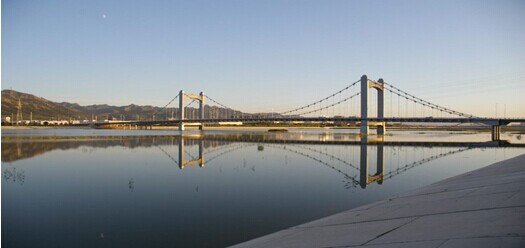
2.Construction Control of Long-Span Bridges
The research direction is about the internal force calculation of construction stage under different construction methods, the analysis and research of construction parameters, structural health assessment of construction process, state error adjustment and the estimation of structural calculating parameters, etc.
Application: construction monitoring and simulating analysis of inner force of long-span bridge structure
Practical example: construction monitoring of the main bridge of Fusui Songhua-river Bridge

3.Experimental Research of Complex Components of Bridge & Multi-scale Analysis of Finite Element Model
This research direction mainly aims at the model testing and numerical simulation analysis of the finite element model of the key components of the bridge structure under different dimensions.
Application: force analysis and model testing of complex bridge structure
Practical example: scaled model testing of pre-stressed concrete box girder in the special-shaped section of the main bridge of Harbin Songhua-river Bridge extension project.

4.Structural Health Monitoring of Bridges and Tunnels
The research of this part is mainly focused on: the method of establishing health monitoring system for long-span bridge and tunnel, the method of establishing health monitoring network for middle-or-short-span bridge, and the damage diagnosis and safety assessment of bridge and tunnel by using massive monitoring data.
Application: structural health monitoring system of long-span bridge, safety operational monitoring of large-scale tunnel, structural health monitoring network of middle-or-short-span bridges, massive monitoring data processing, establishment of health monitoring network based on cloud technology, etc.
Practical example: structural health monitoring system of Tianjin Yonghe Bridge (the health monitoring data of this bridge has been taken as a Benchmark model of international health monitoring, and the structural data of this bridge has been globally shared: http://smc.hit.edu.cn)

5.Technology of Damage Detection, Diagnosis and Reinforcement of Existing Bridges
This topic includes the method of rapid detection and assessment of bridge based on quasi-static load testing, formation mechanism analysis of damage in existing bridge, research of testing detection technology, research of methods and measures of bridge reinforcement, etc.
Application:
(1) Rapid detection of bridge structure;
(2) Appearance inspection of common bridge;
(3) Static and dynamic load testing and assessment of bearing capacity of bridges;
(4) Reinforcing design of damaged bridges.
Practical Example: load testing of Changchun Yitong-river Bridge (concrete-filled steel-tube arch bridge) under completion state.
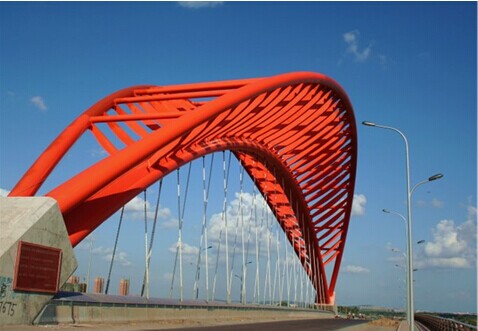
6.Structural Aseismic and Reinforcing Design of Bridges
The research directions are mainly about the aseismic design and analysis of bridges, the application of aseismic design and reinforcing design of bridges using the new materials and the passive control of bridge vibration.
Application: seismic resistant design of bridges, seismic and reinforcing design of bridges based on new materials
Practical example: vibration table testing research of viaduct under multi-support and multi-dimensional seismic excitation
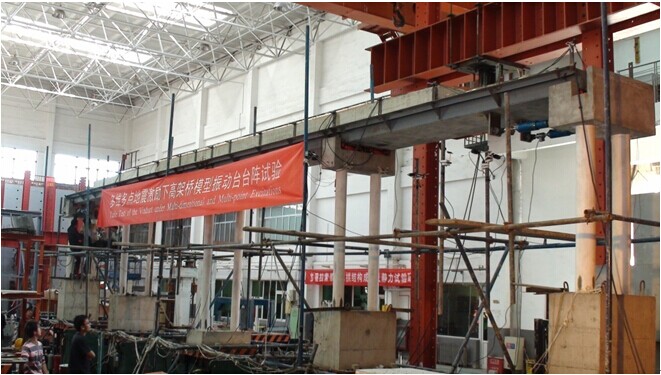
7.Vehicle-Bridge Coupling Vibration Analysis
This research direction is to realize the diagnosis and assessment of structural performance of bridges based on dynamic analysis by using the vehicle-bridge coupling vibration analysis.
Application: diagnosis and assessment of structural performance of bridge based on vehicle-bridge coupling vibration analysis
Practical example: vehicle-bridge coupling vibration analysis of Tianjin Guotai Bridge
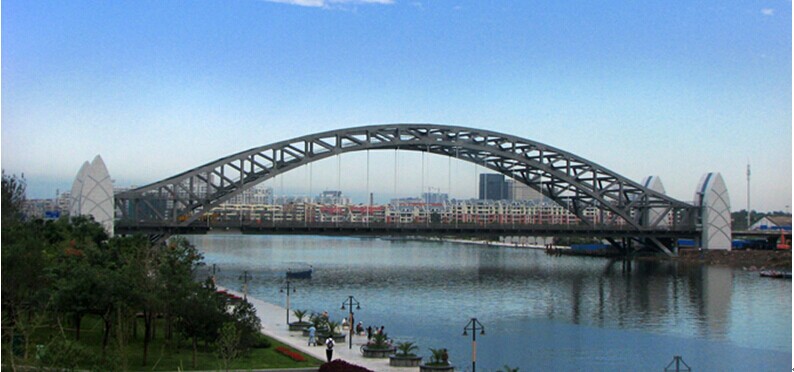
International Exchange
The strategy of international schooling is implemented by the department of bridge and tunnel engineering, yearly with professors visiting abroad for further study sponsored by Chinese Scholarship Council and regularly attending international high-level academic conferences in group. Some overseas sophisticated professors are hired for short-term lectures at our school, improving the foreign communication ability of our teachers.Relying on the project of nation-sponsored graduate students, the most outstanding ones are selected to study further well-qualified mentors of top-level majors and schools abroad like UCB (University of California, Berkley), UIUC (University of Illinois at Urbana-Champaign), NU (Northeastern University), UCLA (University of California, Los Angeles), VT (Virginia Tech), Rice University, etc., developing the best innovative talents.
1. Inviting internationally famous professors for lectures
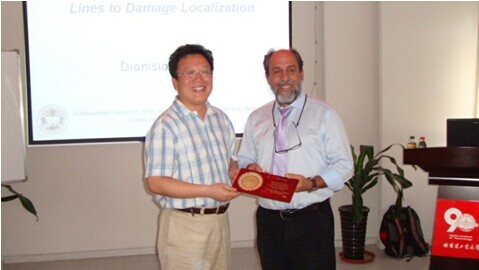
2. Attending international conferences
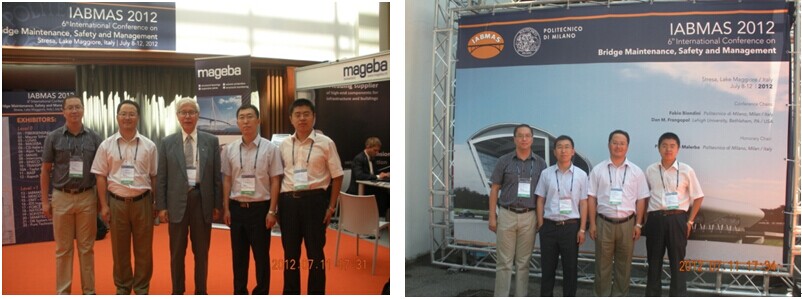
3. Long-term abroad visiting
